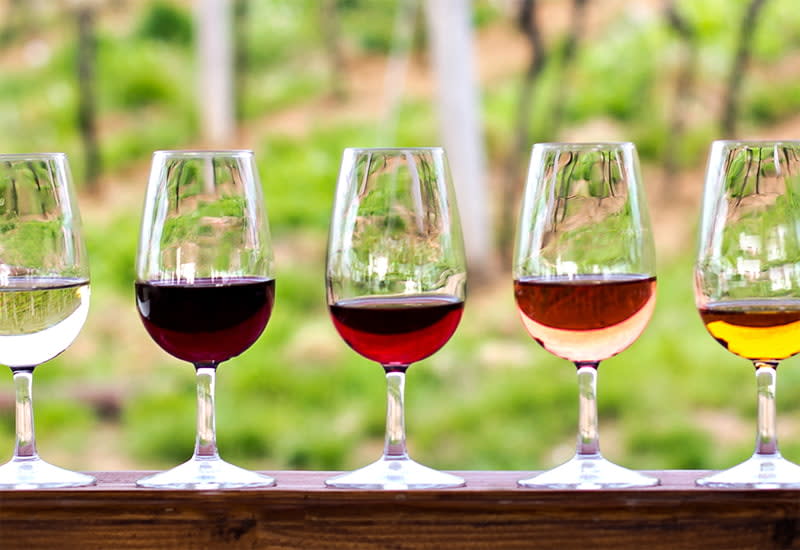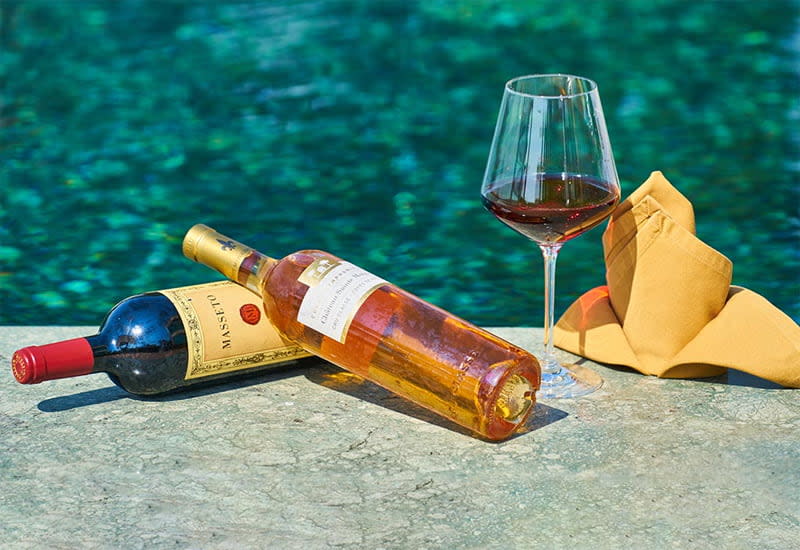We should look at the distinction between Champagne and wine exhaustively, including areas, fixings utilized, winemaking methods, wine styles, pleasantness levels, qualities, and cost.
The Difference Between Wine And Champagne
Here are the distinctions between wine and Champagne:
1. Areas
Wine is created around the world, however basically in Italy, France, Spain, and the United States.
In the interim, Champagne is just made in the Champagne area of France. Notwithstanding, different regions might create shimmering wine utilizing the conventional strategy and afterward name it “Champagne.”
2. Grape Varietals And Other Fruits Used
Wines are delivered from grapes however can likewise be made utilizing different natural products like plum, elderberry, and cherry.
In the interim, Champagne is normally produced using three unique grapes – Chardonnay, Pinot Noir, and Pinot Meunier.
3. Winemaking Techniques

Wine is produced using matured grape or organic product juice. During winemaking, the juice ordinarily goes through a solitary maturation followed by maturing in oak barrels.
Champagne is delivered utilizing the Méthode Champenoise, otherwise called Méthode Traditionelle (customary technique), which includes a two-venture maturation.
Here are the means for creating Champagne:
- The grapes are squashed, and the grape juice is aged in a tank. From that point, the base wine is blended in with sugar and yeast and goes through an optional maturation in the jug.
- During the subsequent maturation, carbon dioxide is caught inside the container and structures bubbles. The wine is then matured in the basements.
- At long last, the dead yeast cells are taken out from the shining cocktail, and the measurement (a combination of sugar and wine) is added.
4. Wine Styles

Wine can be delegated as a still, sustained, or shining wine.
Contingent upon the grape assortments utilized, a still wine can be named red, white, or Rosé. In the interim, invigorated wine is a beverage made by sustaining wine with spirits.
Shining wine is an umbrella term for all wines that go through subsequent aging. Here are altogether the shining wine styles, including Champagne:
- Champagne: This French shining wine style is delivered in the Champagne area utilizing Méthode Champenoise.
- Sekt: This is a shimmering wine style made in Germany. It’s created utilizing the Charmat technique (tank strategy.)
- Prosecco: Prosecco is an Italian shining wine style produced using Bianchetta Trevigiana and Glera grape assortments. It’s created utilizing the Charmat technique.
- Cava: Cava is a Spanish shining wine style made basically from the Macabeu grape assortment. This shimmering wine style is made utilizing the customary strategy (Méthode Traditionelle.)
- American shimmering wine: The American shining wine style is delivered broadly in California. It’s made utilizing a similar conventional strategy utilized in the Champagne area.
5. Styles Based On Sweetness Levels

At the point when an effervescent wine is made, a limited quantity of the wine is lost when the dead yeast cells are taken out. To make up for this, the measurement (wine and sugar combination) is added inside the jug.
Presently, the order of wine in view of pleasantness levels contrasts with that of Champagne.
Contingent upon how much sugar is added, Champagne wine styles can be named follows:
- Brut Nature: 0-3 g of leftover sugar per liter
- Extra Brut: 3-6 g of leftover sugar per liter
- Brut: 6-12 g of lingering sugar per liter
- Additional Sec: 12-17 g of lingering sugar per liter
- Sec: 17-32 g of lingering sugar per liter
- Demi-Sec: 32-50 g of lingering sugar per liter
- Doux: Over 50 g of lingering sugar per liter
How about we look at the pleasantness levels for other shining wine styles:
Cava pleasantness levels:
- Brut Nature: 0-3 g of leftover sugar per liter
- Extra Brut: 3-6 g of leftover sugar per liter
- Brut: 6-12 g of leftover sugar per liter
- Extra Seco: 12-17 g of leftover sugar per liter
- Seco: 17-32 g of lingering sugar per liter
- Semi-Sec: 32-50 g of lingering sugar per liter
- Dolce: Over 50 g of lingering sugar per liter
Prosecco pleasantness levels:
- Brut: 6-12 g of remaining sugar per liter
- Additional Dry: 12-17 g of remaining sugar per liter
- Dry: 17-32 g of remaining sugar per liter
Sekt pleasantness levels:
- Naturherb: 0-3 g of remaining sugar per liter
- Additional Herb: 3-6 g of remaining sugar per liter
- Spice: 6-12 g of leftover sugar per liter
- Extra Trocken: 12-17 g of leftover sugar per liter
- Trocken: 17-32 g of leftover sugar per liter
- Halbtrocken: 32-50 g of leftover sugar per liter
- Gentle: Over 50 g of leftover sugar per liter
6. Taste And Characteristics
Contingent upon the winemaking strategies and grape assortments utilized, wine can be sweet, semi-sweet, or dry. In the meantime, the pleasantness levels in Champagne or some other effervescent rely upon the dose added.
The tasting notes for various wines and Champagnes contrast contingent upon the grape assortments and procedures utilized.
The liquor content in wine as a rule goes from 5-23%, while a Champagne bottle ordinarily has 11-13% ABV.
7. Price
With regards to wine costs, some red wine styles generally order excessive costs. Costs can go from two or three bucks to $101,000+ for the best wine bottle.
A Champagne bottle from a regarded maker ordinarily orders excessive costs. This shimmering wine can cost from $4 to $5 to anything around $57,000+.